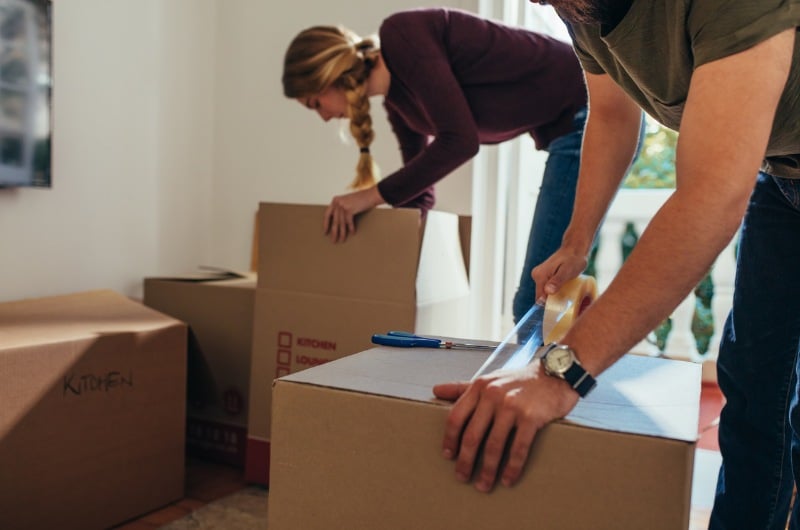
Prefer not to leave your phone number?
No problem!
Schedule an Appointment at your Convenience
(Only email is required)
Schedule an AppointmentOr Call Now
844-545-1881By: Last Updated: May 09, 2024
Learn the secret strategies to safely pack artwork, antiques, and instruments from the pros.

When moving day rolls around, the last thing anyone wants is for their belongings to suffer damage, but secure packing and handling is especially important when it comes to antiques and collectibles. These kinds of pieces aren’t just financially precious; they’re often irreplaceable, carrying deep sentimental or historical significance.
The heartbreak of receiving a unique, valued item ruined can overshadow any amount of money that insurance might offer. For the regular person or collectors, the intrinsic worth of their cherished antiques and collectibles far exceeds any monetary compensation, which can only ever cover a portion of their true value.
That’s where these tips come into play. Once you read this article, you’ll no longer worry about damaging your priceless possessions.
Kicking off your move with fragile treasures? Start by taking stock and jotting down everything. Whip up a moving checklist that captures every gem in your collection along with its current market value. Sure, it sounds like a bit of a chore, but trust me, it’s a smart move to keep everything safe on its journey.
Next up, give each item a good double & triple check, noting any wears or damage. Considering bringing in a pro who knows their way around delicate pieces. They can spot those tiny flaws, peg down how much your stuff is really worth, and offer solid advice on keeping everything in pristine condition.
And here’s a pro tip: snap some detailed shots of each item, covering all angles. These photos aren’t just for Facebook—they’re your backup when it comes to insurance claims or if you need to show proof of damage. It’s all about covering your bases, giving you that extra layer of security and a clear starting point if things go sideways.
When it’s time to move, especially those precious, fragile items, choosing the right packing supplies is crucial.
Here’s your essential shopping list to ensure everything arrives in perfect condition:
With these supplies, you’re set to ensure the safe arrival of your valuables at their new home.
We all know how fragile artwork can be. And it’s exactly why we must take the most care when packing and transporting priceless pieces.
Here are the simple steps to follow if you want your art to look as good as new:
These steps will ensure your artwork remains pristine for years to come.
If something were to happen to your precious antiques, you would neve forgive yourself. Learn how to pack them safely:
If your instruments are as dear to you as your favorite tunes, you’ll want to make sure they’re ready to rock in your new place. Here’s how to get your musical instruments safely through the move.
Stick to these steps, and you’ll be jamming out in your new spot in no time.
Recycled packing materials are acceptable for antiques and fragile items, within reason. Make sure they are clean and dry.
You might score free corrugated boxes, bubble wrap, and various packing supplies from friends or business associates who’ve recently moved or regularly deal with shipments. Make sure to inspect any used packing materials for moisture, rips and tears, or wet materials that weaken the structural integrity or could cause any damage.
Newspaper is a common packing material that is fine for the outer layers of packing protection. But don’t use newspapers to wrap valuable items directly because the ink might transfer.
When you have to move with antiques and fragile items, we have a list of the best moving companies on hand for you. They offer climate controlled storage and specialized handling for items like paintings and fine art, wine collections, and sculptures and statues to care for your special belongings during your move.
Insurance is like your personal superhero during a move, ready to save the day when the unexpected happens. Make sure to double-check your mover’s insurance details to ensure your treasures are protected while on the move.
And for those longer treks, go for movers who offer the whole package: full-value protection and released value protection. Throwing in an extra layer of liability coverage can also give you that peace of mind, keeping your belongings safe from any transit troubles.
Depending on what your budget and needs, you can either go for the DIY method or a professional moving company. We always suggest moving with a professional moving company, even though it can be expensive, because they have the expertise and skills to be efficient and careful when moving your prized belongings.
If you do want more control in the process and don’t fully trust the moving company, you can always package your valuables yourself. Just make sure to follow the steps above if you do.
Be cautious while unpacking. It only takes one misplaced item to slip out of your fingers and break. Assess any damage done to your prized possessions when unwrapping.
Be sure to compare before and after pictures of your valuables to make sure nothing seems off. If you need, there are professional inspector services available. If you do find any damage done by the moving company, file an insurance claim immediately.
It’s now time for you to put these tips into action. You’re ready to take on DIY packing of your most valuable possessions or you could just hire a moving company to do it for you.
Following these tips above will surely give you more confidence for a seamless move.